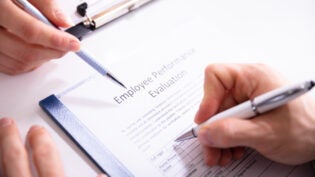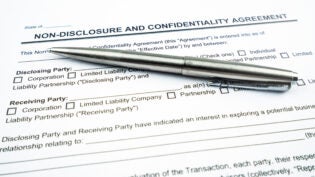Battling Burnout: How the World’s Hardest Workers Achieve Work-Life Balance
By: Andrew Heikkila

As technology has improved over the last decade, more people are finding that the traditional boundaries reserved typically for the workplace are eroding. We’re answering emails at home, taking calls that pull us away from family, and checking documents and communications before bed. As such, work-life balance and burnout have become hot topics in recent years.
According to Gallup’s State of the American Workplace 2017, 53 percent of employees say a role that allows them to have greater work-life balance and better personal well-being is “very important” to them. Those who aren’t feeling balanced are at risk of burnout, as well as the adverse effects of stress that follow. According to the University of Nevada Reno, someone living with the following warning signs may be on the verge of poor balance:
- Overeating, or not eating enough.
- Experiencing lack of sleep.
- Having nightmares about work or certain situations with clients.
- Feeling more anxious, depressed or uneasy than usual.
- Being highly reactive.
- Falling behind on paperwork.
- Being told you’re never around by your family members.
- Getting sick more often than usual.
- Neglecting to take a lunch break during the day.
- Drinking more than five cups of coffee in a day.
- Forgetting to drink plenty of water.
- Refusing to take a break at work.
While it’s normal to feel stressed out every so often, signs that you’re actually overworked shouldn’t be ignored. Physical effects of stress and overwork can lead to poor health; for example, staring at blue light from screens for too long can lead to eyestrain. Mayo Clinic lists these common effects of stress on your body:
- Headache
- Muscle tension or pain
- Chest pain
- Fatigue
- Change in sex drive
- Stomach upset
- Sleep problems
So just how do you obtain and maintain the perfect work-life balance? We need look only to the world’s top CEOs for answers.
Battling Burnout Like the Pros
Some of the busiest people in the world work in the C-suite, where CEOs and other executives manage not only themselves, but organizations consisting of hundreds if not thousands of employees. The Washington State University Carson College of Business lists these five ways that the world’s top CEOs maintain their own work-life balance:
- Define your own balance: Everybody prioritizes their life differently. While you might think there’s a “template” that everybody uses to achieve work-life balance, the truth is that the definition of “balance” itself changes from person to person. While some people are comfortable and even love the grind that 50 to 60 hour work weeks provide, others don’t and aren’t happy working more than 40 hours a week. Don’t conform to any norms—define your own balance and work around that definition to build the schedule you want.
- Get creative with the time you have: WSU writes that, according to a com survey of 256 respondents, executives spend nearly 58 hours per week at work, averaging between 10 and 11 hours per day, six to seven hours sleeping at night, and six to eight hours for other activities. They stress, however, that this isn’t just six to eight hours of free time, but time spent commuting, preparing meals, being with family, etc. While you can’t just cut your daily commute out of your schedule to make time for physical activities, you can get creative and bike to work. While it may take a little longer to get to the office, at least you’ll have gotten your exercise in..
- Participate in leisure activities that improve your performance: Everybody needs time for leisure activities and de-stressing, but that doesn’t mean that you can’t be strategic about what you enjoy. For example, biking, running, or working out not only gets blood flowing, but engages the body in rote activity leaving the mind free to wander. This is similar to the phenomenon of “shower-thoughts,” and can lead to major breakthroughs when stumped. Any creative, solo hobby can provide this type of reprieve, though social activities like golfing allow for conversations as well as wandering minds.
- Be firm about taking time for yourself: Any sensible person needs to understand that while the work never halts, people do. They need to. CEOs understand that, while they might be the go-to person for many matters in their organization, if they’re not operating at 100 percent, mentally and physically, neither will their business. Learn to say “no” to the work and “yes” to your personal time every once in a while—your personal health depends on it.
- Learn from your work-life balance mistakes: Learning from your mistakes is great advice in general, but is extremely pertinent here. Always be analyzing and identifying quirks in your routine, or situations that you feel like you could’ve taken a different approach to. WSU quotes Yahoo’s CEO Marissa Mayer, who wrote: “I have a theory that burnout is about resentment, and you beat it by knowing what it is you’re giving up that makes you resentful. I tell people: Find your rhythm. Your rhythm is what matters to you so much that when you miss it you’re resentful of your work.”
Of course, these are all tips that CEOs and top executive have mastered over lifetimes, so if you don’t get it on the first try, don’t beat yourself up. Remember that learning from your work-life balance mistakes and adapting from there is crucial to battling burnout and maintaining success.
2834 Views











